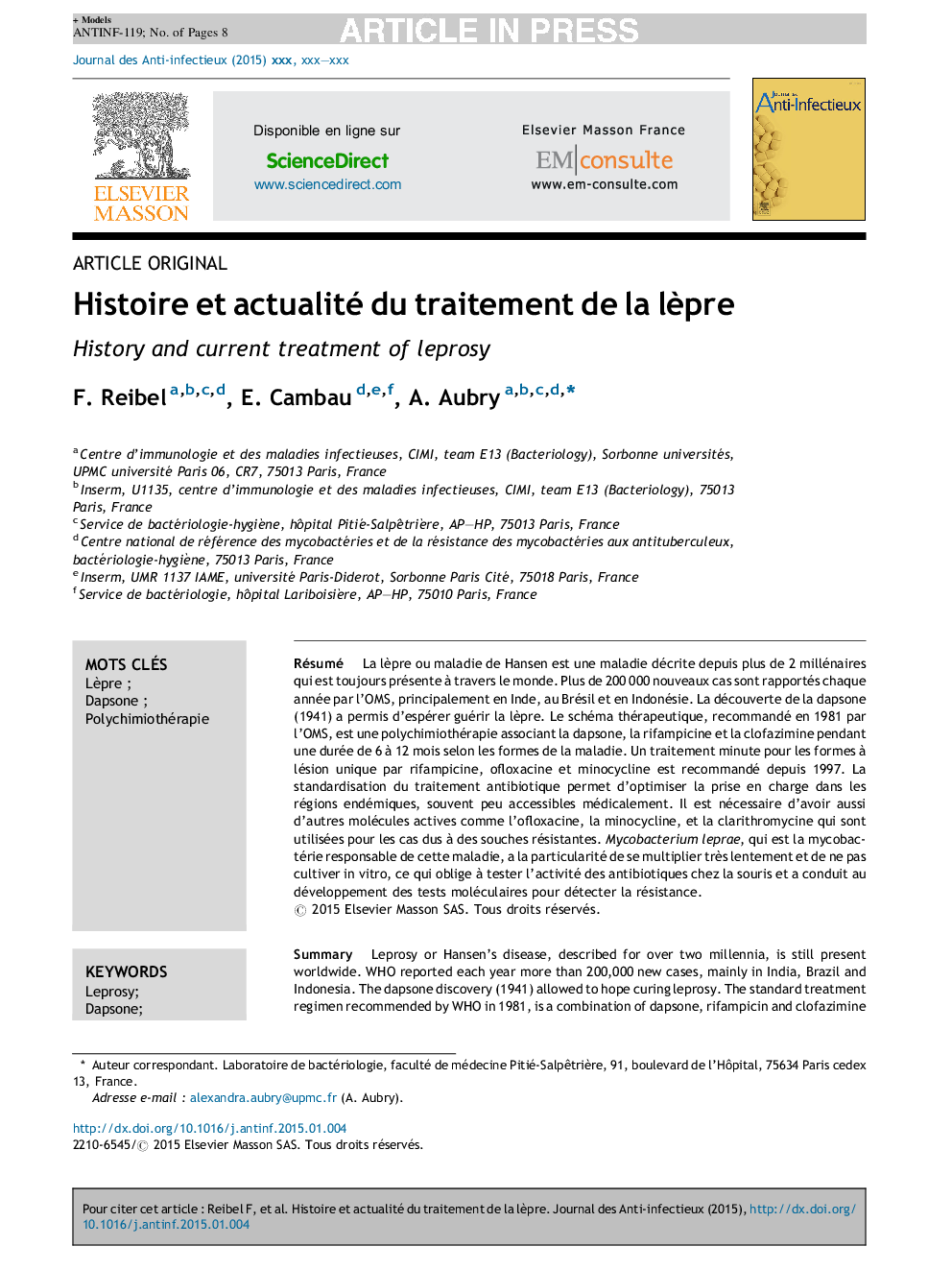| Article ID | Journal | Published Year | Pages | File Type |
|---|---|---|---|---|
| 3405439 | Journal des Anti-infectieux | 2015 | 8 Pages |
Abstract
Leprosy or Hansen's disease, described for over two millennia, is still present worldwide. WHO reported each year more than 200,000 new cases, mainly in India, Brazil and Indonesia. The dapsone discovery (1941) allowed to hope curing leprosy. The standard treatment regimen recommended by WHO in 1981, is a combination of dapsone, rifampicin and clofazimine for a period of 6 to 12 months according to the classification of the disease. Since 1997, a single dose of rifampicin, ofloxacin and minocycline is recommended for single lesion leprosy. Standardization of antibiotic treatment allows the optimization of the disease management in endemic areas, which are often poorly accessible. For resistant strains, second line antileprosy drugs such as ofloxacin, minocycline, and clarithromycin can be used. Mycobacterium leprae, the mycobacterium responsible for this disease, has the particularity to grow very slowly without the ability to grow in vitro. Therefore, a murine model is necessary to test the activity of antibiotics against M. leprae whereas the development of molecular tests improves the detection of antibiotics resistance.
Related Topics
Health Sciences
Medicine and Dentistry
Infectious Diseases
Authors
F. Reibel, E. Cambau, A. Aubry,
